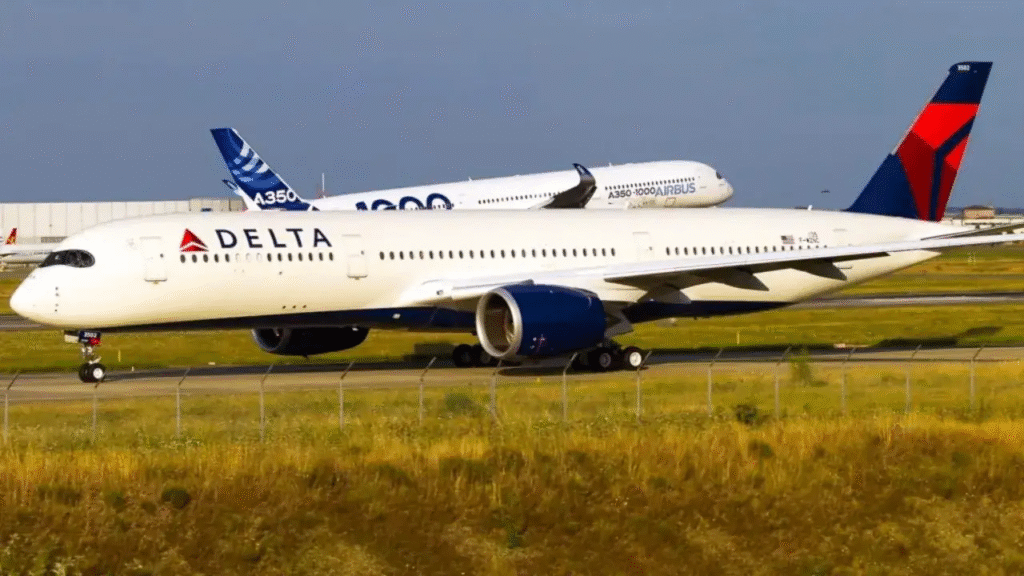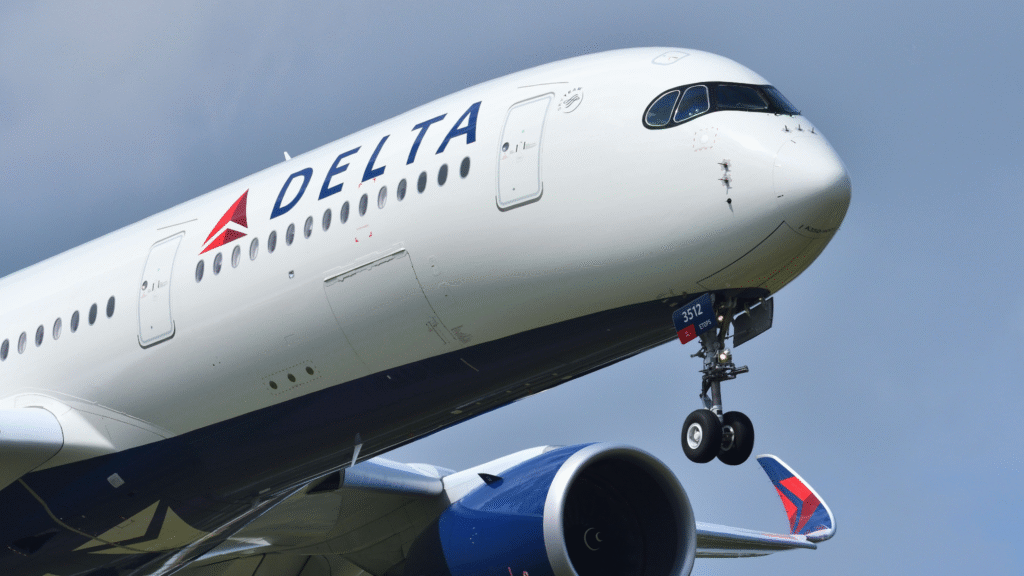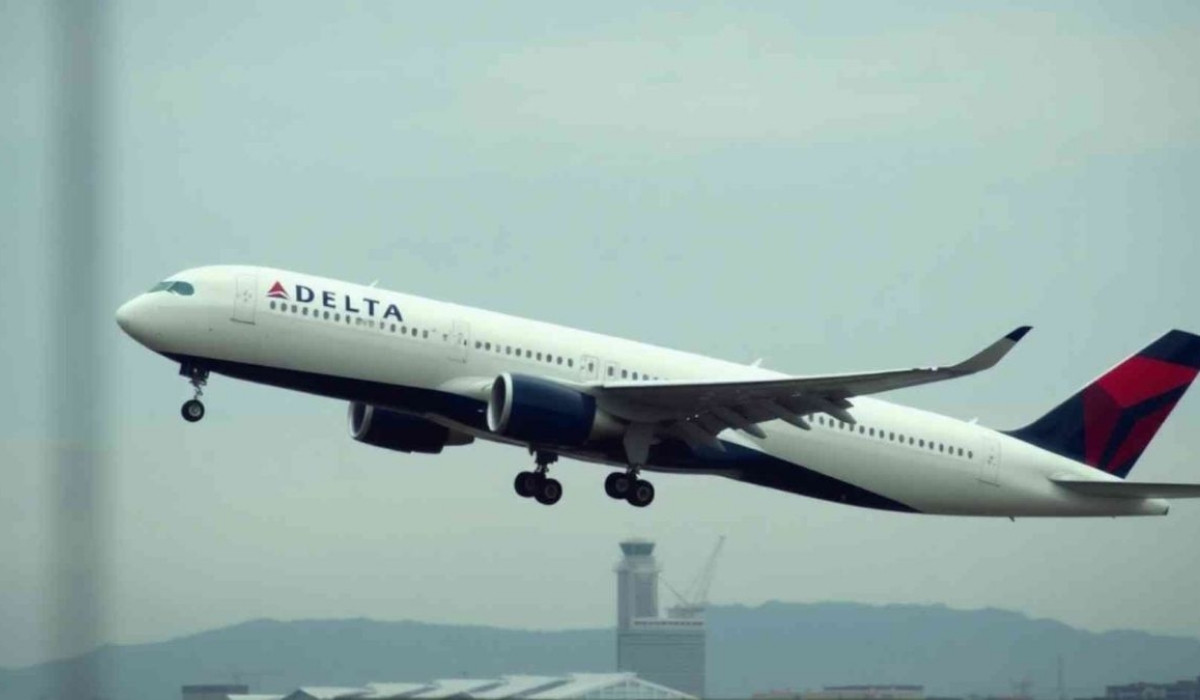When Delta Flight DL275 was unexpectedly diverted to Los Angeles International Airport (LAX) instead of continuing its scheduled journey from Tokyo Haneda Airport (HND) to Atlanta (ATL), it drew widespread attention and concern from travelers and aviation watchers alike. Such long-haul diversions are relatively uncommon, especially on transpacific routes, and they often raise questions about what went wrong and how the airline responded.
This article explores the reasons behind the diversion of Delta Flight DL275, how the situation unfolded, and what it reveals about modern aviation safety protocols.
Background: The Tokyo to Atlanta Route
Delta Flight DL275 is a long-haul service connecting Tokyo Haneda Airport (HND) to Hartsfield–Jackson Atlanta International Airport (ATL). The route covers nearly 6,850 miles and typically takes around 12 to 13 hours to complete. Operated by the Airbus A350-900, one of Delta’s flagship aircraft for international routes, it carries hundreds of passengers across the Pacific.
On this particular flight, however, the journey did not go as planned. Instead of continuing to Atlanta, the flight made an unscheduled stop at Los Angeles International Airport (LAX), creating confusion among passengers and curiosity from those following live flight tracking.
The Diversion: What Caused Delta Flight DL275 to Land at LAX?

Although airlines do not always release full technical details immediately, preliminary statements and reports indicated that Delta Flight DL275 was diverted due to a possible mechanical issue. It could have been related to an engine alert, a sensor malfunction, or a cabin pressurization warning — all of which are common reasons for precautionary diversions.
Delta’s pilots, in coordination with the airline’s operations team, decided that Los Angeles was the most suitable diversion point. LAX is one of Delta’s major hubs, equipped with maintenance facilities, technical crews, and ground resources capable of handling such situations efficiently. Choosing Los Angeles ensured that passengers could be accommodated safely while the aircraft underwent inspection.
Decision-Making Process: How Pilots Handle Diversions
A decision to divert a flight like Delta Flight DL275 is made with extreme care. Pilots follow strict safety protocols and consult with Delta’s operations control center to determine the best course of action. They evaluate several factors including:
- The nature and severity of the issue
- The aircraft’s current position and distance from suitable airports
- Weather conditions at potential diversion airports
- Remaining fuel and aircraft performance
The final authority always rests with the captain, who must ensure the safety of everyone onboard. In this case, diverting to LAX allowed the crew to land at an airport that could handle a large international aircraft like the Airbus A350 and provide the technical support required to inspect it properly.
Passenger Experience During and After the Diversion

For passengers on board, the diversion created a mix of uncertainty and relief. According to social media posts and passenger accounts, the flight crew made clear announcements explaining that the diversion was precautionary and not due to an immediate danger.
After the aircraft landed safely at LAX, Delta provided passengers with accommodations, meal vouchers, and rebooking assistance for connecting flights to Atlanta or other destinations. Those with tight connections or business plans experienced delays, but most expressed appreciation for the crew’s professionalism and calm handling of the event.
Delta’s customer care team at LAX reportedly worked quickly to rebook flights, demonstrating the airline’s commitment to minimizing disruption and maintaining passenger satisfaction, even in unexpected circumstances.
Technical Reasons for Diversions on Long-Haul Flights
Mechanical or system warnings are among the most frequent causes of in-flight diversions. Modern aircraft are equipped with advanced sensors that constantly monitor every aspect of performance. If a system detects even a minor irregularity, the cockpit may display a warning that requires inspection on the ground.
Common technical or operational reasons for diversions include:
- Engine or System Alerts – Indicating a potential fault in hydraulics, pressurization, or fuel systems.
- Medical Emergencies – A passenger or crew member requires immediate medical attention.
- Weather Conditions – Severe turbulence, strong headwinds, or storms affecting route safety.
- Operational Constraints – Crew duty limitations or restricted airspace.
Given the flight’s long route over the Pacific Ocean, diverting to Los Angeles rather than continuing to Atlanta was the most logical choice once an issue was detected.
Delta Air Lines’ Response and Safety Standards

After the incident, Delta Air Lines confirmed that the diversion of Delta Flight DL275 was made out of an abundance of caution. The aircraft landed safely and was thoroughly inspected by maintenance crews at LAX before returning to service. No injuries were reported, and passengers were transported to their final destinations as soon as possible.
Delta’s reputation for stringent safety standards and well-trained staff is reflected in how the situation was managed. The airline’s technical operations center in Atlanta oversees maintenance for its global fleet and ensures that any aircraft involved in a diversion undergoes detailed evaluation before resuming operations.
Why Diversions Are a Sign of Safety, Not Danger
While news headlines about a flight being diverted might sound alarming, in reality, diversions are a key indicator of how safe modern aviation has become. Aircraft today are designed to detect even the smallest irregularities. Pilots act on those warnings to ensure that no potential problem escalates.
In the case of Delta Flight DL275 diverted to LAX, the decision demonstrated that Delta’s flight crew prioritized safety and followed established international aviation protocols. The choice to divert ensured that maintenance experts could quickly inspect the aircraft in a controlled environment with the necessary equipment and personnel on hand.
Lessons from the Delta Flight DL275 Diversion
The diversion of Delta Flight DL275 to LAX highlights the complexity of long-haul aviation and the commitment airlines have to safety. Every decision made in the cockpit is based on training, experience, and a structured system of communication with ground operations.
While diversions cause inconvenience, they serve a far greater purpose: ensuring that passengers and crew reach their destination safely, even if that means an unplanned stop along the way. The professionalism of Delta’s pilots, flight attendants, and ground staff turned a potentially stressful event into a controlled, well-managed outcome.
Passengers ultimately arrived in Atlanta or their connecting cities later than expected but with confidence that their airline took every necessary step to protect their safety.
Frequently Asked Questions (FAQs)
1. Why did Delta Flight DL275 divert to LAX?
- Delta Flight DL275 diverted to Los Angeles International Airport due to a potential technical or mechanical issue identified during the flight. The diversion was made as a precautionary measure.
2. Was the diversion an emergency situation?
- No, the diversion was precautionary. The aircraft landed safely, and passengers were not in danger at any point during the flight.
3. What aircraft operates Delta Flight DL275?
- The flight is typically operated using the Airbus A350-900, one of Delta Air Lines’ most advanced and fuel-efficient aircraft.
4. How did Delta assist passengers after the diversion?
- Delta provided rebooking options, hotel accommodations, meal vouchers, and customer assistance to ensure travelers reached their destinations with minimal inconvenience.
5. Are diversions like this common?
- While diversions are not frequent, they do occur occasionally on international flights due to safety, weather, or medical reasons. They are an important part of ensuring aviation safety.








